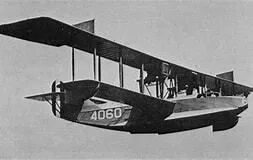H-16 (Total: 278, Canadian: 2, Group 0)
Curtiss H-16

(Source Wikipedia)
The Curtiss Model H was a family of classes of early long-range flying boats, the first two of which were developed directly on commission in the United States in response to the £10,000 prize challenge issued in 1913 by the London newspaper, the Daily Mail, for the first non-stop aerial crossing of the Atlantic. As the first aircraft having transatlantic range and cargo-carrying capacity, it became the grandfather development leading to early international commercial air travel, and by extension, to the modern world of commercial aviation. The last widely produced class, the Model H-12, was retrospectively designated Model 6 by Curtiss' company in the 1930s, and various classes have variants with suffixed letters indicating differences.
The Model H-16, introduced in 1917, represented the final step in the evolution of the Model H design. With longer-span wings, and a reinforced hull similar to the Felixstowe flying boats, the H-16s were powered by Liberty engines in U.S. Navy service and by Eagle IVs for the Royal Navy. These aircraft remained in service through the end of World War I. Some were offered for sale as surplus military equipment at $11,053 apiece (one third of the original purchase price.) Others remained in U.S. Navy service for some years after the war, most receiving engine upgrades to more powerful Liberty variants.
With the RNAS, H-12s and H-16s operated from flying boat stations on the coast in long-range anti-submarine and anti-Zeppelin patrols over the North Sea. A total of 71 H-12s and 75 H-16s were received by the RNAS, commencing patrols in April 1917, with 18 H-12s and 30 H-16s remaining in service in October 1918.
U.S. Navy H-12s were kept at home and did not see foreign service, but ran anti-submarine patrols from their own naval stations. Twenty aircraft were delivered to the U.S. Navy. Some of the H-16s, however, arrived at bases in the UK in time to see limited service just before the cessation of hostilities. Navy pilots disliked H-16 because, in the event of a crash landing, the large engines above and behind the cockpit were likely to break loose and continue forward striking the pilot. Wikipedia
H-16 H-16 serial G-CYEP
s/n GCYEP
as/n N 4905
Curtiss Aero
G-CYEP
Known Units:
Ex RAF N4905. Part of 1919 Imperial Gift. Used at Winnipeg, Manitoba in 1923.last update: 2025-February-06
1922-February-02 Taken on Strength 2022-02-07
1924-January-02 Struck off Strength 2019-08-20
H-16 H-16 serial N4902
s/n N4902
Curtiss Aero
N 4902
Known Units:
Parts built in US, shipped to UK and placed in stores. To Canada as part of Imperial Gift in 1919. Held for spares for G-CYEP, never received Canadian registration or serial number.last update: 2025-February-05
1924-November-07 Struck off Strength 2019-08-20
 Harold Skaarup Web Page
Harold Skaarup Web Page Wikipedia H-16 Flying Boat
Wikipedia H-16 Flying Boat